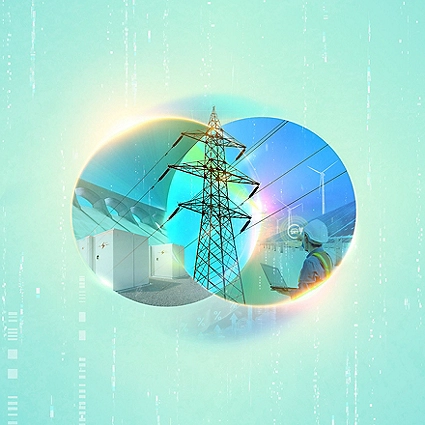The energy & utilities market continues to evolve in 2025, driven by changing demand, policy reforms, and global economic pressures. From power prices and oil trends to clean energy investments and geopolitical factors, a lot is shaping how this vital sector operates today. In this roundup, we break down the most important developments in the energy and utilities sector in easy-to-understand language.
Whether you’re a casual investor, a student of economics, or simply curious about where your electricity and fuel come from — this article covers everything you need to know.
Overview of the Global Energy & Utilities Market
The energy & utilities market refers to the sectors involved in producing and distributing energy (like electricity and gas), and utility services (like water supply, sewage, and waste management). In 2025, the spotlight continues to be on:
- Renewable energy growth
- Volatile oil & gas prices
- Grid modernization
- Energy storage technologies
- Climate regulations
Governments across the globe are working to reduce carbon emissions, while private companies are investing billions into solar, wind, and other clean technologies.
1. Oil & Gas: A Tug of War Between Supply and Demand
The oil market is always a key indicator of the global economy. In the first half of 2025, we’ve seen oil prices fluctuate due to:
- Supply chain issues in the Middle East and parts of Africa
- Ongoing geopolitical tension between Russia and NATO-aligned countries
- Slower-than-expected economic growth in major economies like China and the U.S.
Key Stats:
- Brent Crude hovered around $84–$89 per barrel in Q2 2025.
- Natural gas prices in Europe rose nearly 12% in June 2025, due to rising demand in hot summer months.
- U.S. shale oil production slightly declined due to new environmental policies and labor shortages.
These shifts affect not just fuel prices at the pump, but also how much industries pay to power their operations.
2. Renewable Energy Investments at All-Time High
One of the biggest stories in the energy & utilities market is the massive push toward renewable energy. Governments are setting aggressive targets:
- European Union: Aims for 42.5% renewable energy use by 2030.
- India: Plans to add 250 GW of renewable capacity by 2030.
- U.S.: The Biden administration has allocated $100 billion for clean energy development in the next five years.
Notable Developments:
- Tesla Energy launched a new solar roof product that could cut costs by 30%.
- BP and TotalEnergies announced new offshore wind projects in Southeast Asia.
- The International Energy Agency (IEA) reported that wind and solar made up 80% of new power capacity added in 2024 globally.
3. Utilities Facing Pressure to Modernize
While generation is getting greener, utilities that deliver energy to homes and businesses face a new challenge: grid modernization.
Aging infrastructure, especially in North America and parts of Europe, has caused frequent blackouts and high maintenance costs.
Utility Challenges in 2025:
- Extreme weather (wildfires, hurricanes, heatwaves) damaging power lines.
- Cybersecurity threats targeting grid systems.
- Integration of renewable energy into outdated grids.
To meet these challenges, utility companies are:
- Installing smart meters.
- Deploying battery storage systems.
- Using AI to manage demand and supply more efficiently.
4. Consumer Energy Prices: Relief or More Pain Ahead?

High energy prices have affected households in recent years. In 2025, however, some regions are seeing relief:
- Europe: Energy bills are stabilizing after years of crisis, thanks to improved LNG storage and solar capacity.
- India & Southeast Asia: Electricity prices remain high due to coal dependency and rising demand.
- United States: Consumers benefit from lower gas prices, but summer heatwaves are driving up electricity usage and costs.
Consumer Tips:
- Switch to energy-efficient appliances.
- Take advantage of local solar rebates or tax credits.
- Use smart thermostats to control energy consumption.
5. Nuclear Energy: A Quiet Comeback
While controversial, nuclear energy is making a comeback in 2025.
Why?
- It offers zero-emissions power.
- It’s reliable even when the sun doesn’t shine or the wind doesn’t blow.
- Small Modular Reactors (SMRs) are gaining acceptance as a safer alternative.
Countries like Canada, France, and Japan are restarting nuclear projects, while even the U.S. is reconsidering old nuclear plants.
6. ESG and the Green Transition
ESG — which stands for Environmental, Social, and Governance — is now at the heart of energy investing.
In 2025:
- Energy companies must disclose their carbon footprint.
- Investors prefer stocks that meet sustainability standards.
- There’s more pressure to divest from fossil fuel-heavy portfolios.
Major firms like Shell and Chevron are under scrutiny. On the other hand, companies like NextEra Energy are gaining popularity among ESG-conscious investors.
7. Energy Storage: The Next Big Thing
As renewables grow, so does the need for energy storage. You can’t rely on solar power at night or during cloudy days. That’s where battery storage comes in.
Innovations in 2025:
- Lithium-iron phosphate batteries are cheaper and safer than ever.
- Companies like CATL and Panasonic are developing large-scale energy storage systems.
- Hydrogen fuel cells are being tested for long-term energy storage.
Energy storage is key to balancing power loads and reducing blackouts.
8. Geopolitical Impacts on the Energy Market
Energy is deeply tied to global politics. In 2025, the following are shaping the energy & utilities market:
- Conflict in the Red Sea has disrupted key oil shipping routes.
- U.S.-China trade tensions are slowing clean tech exports.
- African nations are emerging as new energy leaders, especially in solar and green hydrogen.
Investors and policymakers are watching these situations closely as they affect both prices and supply chains.
9. Key Stocks & Investment Outlook
For investors, energy and utility stocks are often seen as defensive — offering stable returns even in uncertain markets.
Top Performers in 2025 So Far:
- NextEra Energy (NEE): Riding the clean energy wave.
- ExxonMobil (XOM): Rebounding due to strong oil prices.
- Enphase Energy (ENPH): Gaining from the rise in home solar installations.
Trends to Watch:
- Growth of utility ETFs.
- Rise of green bonds for renewable projects.
- Shift toward private equity funding in energy tech startups.
10. The Future of the Energy & Utilities Market

Looking ahead, the energy & utilities market will be shaped by:
- Decarbonization goals
- Tech-driven innovation
- Public-private partnerships
- Global climate agreements
The world is not just shifting what energy is used, but also how it’s delivered and consumed. Smart grids, decentralized energy systems, and blockchain-based energy trading platforms are no longer science fiction.
Conclusion
The energy & utilities market in 2025 is at a turning point. From rising renewable energy adoption to modernizing the grid and dealing with geopolitical challenges, the sector is full of opportunities and risks.
Whether you’re a policymaker, investor, business owner, or everyday consumer, staying informed is key. The future of energy is not just about power — it’s about sustainability, accessibility, and innovation.
Read Next – Boeing CEO of Defense Space & Security: Steve Parker Takes the Helm Permanently






